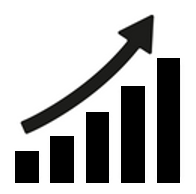I frequently hear this question – how many Sales Development Reps (SDRs) you need for each closing rep. “What is the ideal “Outbound SDR to AE Ratio?” – in other words, how many SDRs should you have for each Closer? In fact, I get this question from other Sales VPs so often that I wanted to write an article on it.
My answer to these questions is always the same: how many Sales Development Reps (SDRs) you need per Closing Rep is a subjective, arbitrary number.
Don’t think of it as a function of headcount – instead, focus instead on how many opportunities each of your SDRs is able to produce produce in total per month (or per quarter) when you’re building or scaling your sales team. The “SDR : AE ratio” is a function of the number of opportunities your SDRs can produce.
To figure out these numbers, you’ll need to do a bit of capacity planning. You’ll need to know:
- The ideal number of open opportunities each closer should work at any given time (I typically think of 25-30 opportunities open in a selling period as the right number for our company, but it depends on how many your closers can work to hit their number).
- The percentage of new business you need generated by your outbound SDRs vs other opportunity sources such as marketing and partners, etc.
- How many opportunities your SDRs can source per month.
Let’s break it down one by one.
What is the ideal number of open opportunities each individual closer should work at one time?
During a typical 50-hour work week (no, not 40 hours – this is Sales!), a closer spends all his or her time working the open opportunities in her pipeline. This includes initial discovery calls, product demos and discussions, qualifying opportunities, following up with contacts, working on later-stage opportunities, and so on.
The optimal number of open opportunities per closing rep will vary from business to business. It depends on sales cycle length, average deal size, and business model. Let’s say that a business has a 1-2 month sales cycle (transactional sales model) and an average deal size of $5k – $15k average deal size in typical software (or $ ACV, in SaaS taxonomy). To do all the work sufficiently in a 50-hour week, closers at that company could work 25-30 opportunities at any given time. You can also do capacity planning in Excel and quickly come up with the right number for your business.
What percentage of new business comes from outbound SDRs?
Where do these 30 open opportunities come from? For simplicity’s sake, let’s say you want 50% of your new opportunities to come from your outbound SDR calls. The other 50% comes from Marketing.
How many opportunities should your outbound SDRs source each month?
Let’s assume your closer needs to hit $60k a month.
If your $ACV is $10k, then each closer must win 6 deals to hit that $60k quota. And if each closer’s Win Rate is 20%, then he or she needs to work 30 opportunities in a selling period (i.e. 20% of 6 deals = 30 opportunities).
If 50% of new opportunities need to come from outbound SDR calls, then each SDR needs to produce 15 opportunities per month (i.e. 50% of 30 opportunities = 15 opportunities).
If each SDR is in fact able to produce 15 opportunities per month, then your “SDR : Closer Ratio” will end up being 1:1 – not 2:1 or 3:1, which many sales executives might assume. However, if you are just starting out and you have not fine-tuned your model and your SDRs are producing only say 5 opportunities per month, then the SDRs : Closers ratio should be 3:1.
So as you can see, it’s really not about the headcount – opportunity production that is the real ratio you should be optimizing for.
So, what do you think? How do you look at this ratio at your company?
Zorian Rotenberg is VP of Sales & Marketing at InsightSquared.
Originally Posted on InsightSquared.com.
